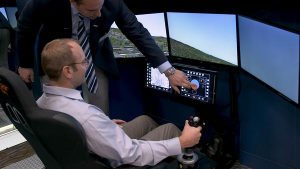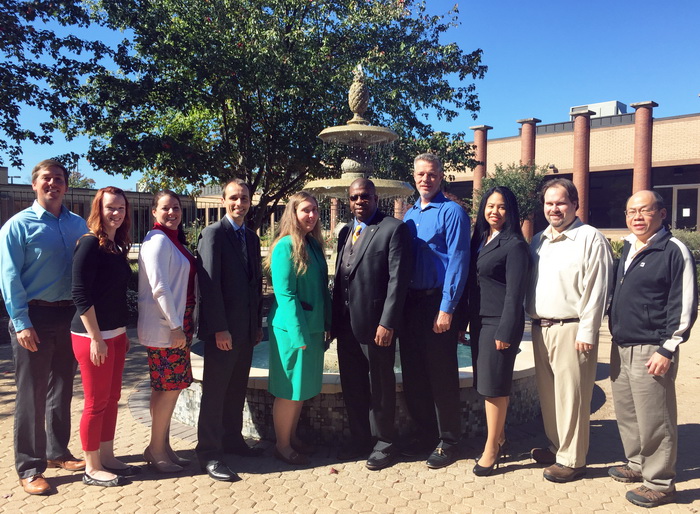
Participants try out live demos at the Air Combat Electronics program office (PMA-209)’s annual Open Architecture Industry Day and Future Airborne Capability Environment Consortium Oct. 17-19. More than 450 attendees participated in the three-day event.
The Air Combat Electronics program office (PMA-209) hosted an Open Architecture (OA) Industry Day and Future Airborne Capability Environment (FACE™) Consortium Oct. 17-19, aiming to help government and industry learn more about Naval Aviation inventory and capability growth, Speed to the Fleet and the Navy’s OA standards and alignment efforts.
More than 450 attendees, including industry counterparts, NAVAIR program platform and competency representatives, the U.S. Army’s Aviation & Missile Research Development & Engineering Center and the U.S. Air Force Research Laboratory, participated in the three-day event.
In her opening remarks, keynote speaker Leslie Taylor, executive director of the Naval Air Warfare Center Aircraft Division and deputy assistant commander for Test and Evaluation for NAVAIR, emphasized the importance of events like this, noting that it “allows a lot of practitioners in the open architecture field to come together, network and learn from each other.”
This year’s event captured state-of-the-art industry software and hardware offerings, and featured the program office’s guidance on its OA pursuits. Throughout the day, participants could browse demonstrations from over 30 industry and government partners who showcased examples of products and tools that are certified conformant to, or aligned with the FACE™ Technical Standard. Live demonstrations were held on the first full cockpit solution hosting Units of Conformance aligned with the FACE™ Technical Standard, as well as the first Real-Time Operating System to conform to the FACE™ Operating System Segment Safety Base Profile.
On the second day, Capt. Chris McDowell, PMA-209 program manager, addressed the crowd and emphasized the multi-faceted benefits of collaborating with industry partners.
“The shared understanding of where the technology is to meet our open architecture approaches and solutions is of great benefit,” he said. “That is where the cost-wise piece comes into this, rather than coming up with solutions only known by a select few or a select platform or two. By defining and standardizing the interfaces, we’re able to bring together those technologies into shared solutions across multiple platforms, and meet the needs across all of the services and ultimately get it into the hands of the Warfighter faster.”
As NAVAIR’s executive agent for the development and management of Air Combat Electronics systems, PMA-209 is responsible for providing critical capabilities to the Warfighter in the form of common, fully developed, supportable and reliable systems that align with the strategic and operational requirements of Program Executive Office/PMA customers.

Members of the Future Airborne Capability Environment (FACE™) team. From left: Ken O’Driscoll, Alicia Patz, Amanda Wood, Keith McDonnell, Sarah Brant, Roderick Dailey, Ken Stanka, Syl Jenkins, Brian Cummings and Dr. Howell Yee.


